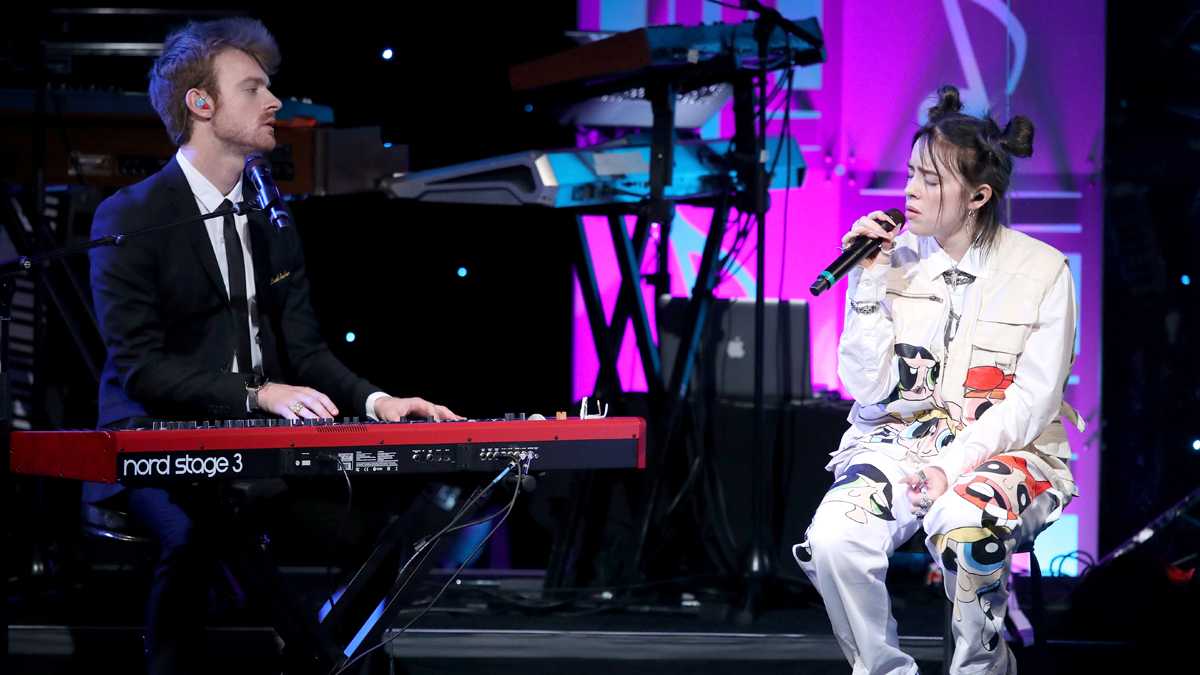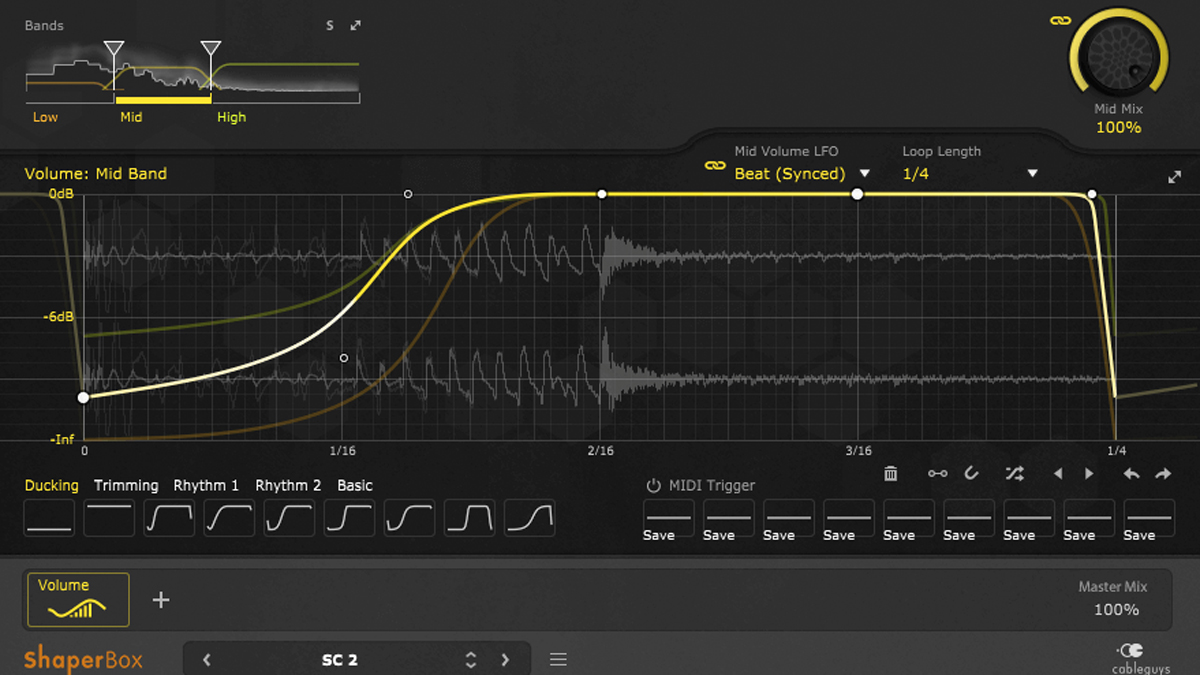How to sound like: Billie Eilish, Bad Guy
The songwriting and production secrets behind one of the biggest songs of 2019
Billie Eilish is a true 21st-century pop star: a teenage phenomenon with a huge global fanbase, loyal online following and an edgy persona based around emotional honesty and insouciant detachment.
Raised in Los Angeles by parents in the entertainment industry, she made her debut in 2016 at the tender age of 14, when she released Ocean Eyes via SoundCloud. The track gained an immediate buzz, spawned a remix EP and was closely followed by more formal releases, including Bored, which appeared on hit Netflix teen drama 13 Reasons Why.
If such precocity is almost guaranteed to have older generations tutting about millennials, Eilish’s musical talent backs up her youthful success. Three years on from that SoundCloud debut, she already has a platinum-certified album in the bag after the release of When We All Fall Asleep, Where Do We Go? earlier this year.
Bad Guy is the album’s standout track, with the original version and Justin Bieber-featuring remix clocking up more than 700 million Spotify plays between them. The accompanying video is also well on the way to half a billion YouTube views.

Production
Fittingly, for someone from a family of performers, Bad Guy was produced by Eilish’s older brother and regular collaborator Finneas O’Connell, himself a singer-songwriter as well as an actor best known for his role as Alistair in musical comedy-drama series Glee. O’Connell produced and co-wrote When We All Fall Asleep alongside Eilish.
Like so much modern pop, Bad Guy mixes and matches tropes from different styles, cherry-picking the minimal aesthetic of experimental electronica, the bass-heavy mix of trap and the organic percussion of ‘90s R&B.
Bad Guy is one of the more energetic tracks on the album, with its swirling, woozy synth breaks adding a certain sense of humour to the arrangement and acting as a tongue-in-cheek counterpoint to the dark subject matter, with its lyrical references to bloody noses, bruised knees and sexual power dynamics.
Get the MusicRadar Newsletter
Want all the hottest music and gear news, reviews, deals, features and more, direct to your inbox? Sign up here.
Above all, the track is driven by Eilish’s distinctive vocal delivery, which is apparent almost immediately from the start over minimal synths and heavy bassline.
Above all, the track is driven by Eilish’s distinctive vocal delivery, which is apparent almost immediately from the start over minimal synths and heavy bassline. Musically, the track is a simple chord progression in the key of Gm, with Eilish’s naive, repetitive melodies adding a sinister feel and placing the focus squarely on her multitracked vocal delivery, in which she harmonises with herself and reinforces key phrases.
For much of the track the production is sparse, best exemplified by the minimal drum arrangement, with just a few finger clicks here and there, a shaker in the chorus and some hand claps in the second verse (during which the bass and synths drop out entirely for a few bars).
The structure of the track is also unusual, with just two verses and choruses before the track shifts entirely around the two-and-a-half-minute mark, dropping from 135bpm to 60bpm (arguably a halftime 120bpm) for a bridge/outro, a contrasting section with notably different instrumentation in the form of trap hi-hats, a heavily distorted kick, snare and spoken vocals.
Magic moment
The lyrical payoff in the chorus is the announcement that Eilish herself is “that bad type/Make your mama sad type/Make your girlfriend mad tight/Might seduce your dad type”, before the backing drops to silence and she announces in a processed drawl that she’s the bad guy. It’s followed by a single spoken word...
Duh!
It’s a gloriously disdainful exclamation, expressing how obvious it is that Eilish is the alpha female in this scenario. Unsurprisingly, her deadpan persona has given rise to thousands of memes and gifs.
Get the sound
When We All Fall Asleep, Where Do We Go? features a number of tracks which put a twist on fairly conventional approaches: 8 is based on a straightforward ukulele ditty with pitch-shifted vocals; When The Party’s Over is a piano-and-layered-vocals breakup ballad at heart; Listen Before I Go is a pared-back piano-and-synth arrangement interspersed with unusual bass synth stabs.
Bad Guy is structurally quite unusual, but its instrumentation isn’t particularly complex to recreate, focusing heavily on quite simple layered synth sounds, organic percussion hits and 808-based drums.
The key element uniting all of these tracks is the artist’s distinctive vocal performance. Eilish employs a fairly unusual technique, but what’s probably even more important in determining her signature sound is the way she sings incredibly softly, bordering on a whisper. It’s an engrossing delivery, unusual in that it’s rarely breathy despite its delicacy.
The key to the 'Bad Guy' exclamation is the layering a modulated version of the vocal underneath the unprocessed original.
To embellish the unusual delivery, O’Connell regularly multi-tracks Eilish’s vocals and processes certain phrases heavily. One of the most distinctive pieces of vocal processing used in Bad Guy is the fluttering sound applied to “I’m the baaaad guyyyyyy” in the chorus. (Similar effects appear on other album tracks like Xanny and Ilomilo.)
The key to this sound is the layering a modulated version of the vocal underneath the unprocessed original. There are a few ways of achieving the rapid volume changes for the processed copy (you could use automation, LFO modulation or even panning for variations on the same kind of sound), but it’s essentially a fast tremolo-style effect layered with the clean version (in the case of Bad Guy it sounds like it’s 64th-note tempo-synced).
Once you have the basic effect in place, you can experiment with adding further processing to the modulated copy. On Bad Guy it sound like there’s a flanger effect applied, but chorus, heavy filtering or even distortion can also work nicely to create variations.
Essential gear if you want to sound like Billie Eilish

€29/$34
Eilish’s trademark ‘fluttering’ vocal has been compared to the sound of someone singing into a fan, but at heart it’s a layered tremolo effect. For even more control over the sound, VolumeShaper allows you to create complex volume modulation. Process a copy of your vocal track or automate an aux send to create spot effects on particular lines and phrases.
MusicRadar organic percussion hits
Free
The minimal drum arrangement is focused heavily on organic percussion sounds, most notably a finger click, a shaker and a hand clap. It’s pretty easy to record your own sounds, but even quicker to pick suitable samples. Where better to start than with some of our own free sample packs?

€99
The distinctive instrumentation of Bad Guy is based around a sparse selection of sound sources, relying heavily on the Roland TR-808: layered kick drums dominate the main 135bpm section of the track, then additional hi-hats and snares joining for the 60bpm outro. D16’s Nepheton is an excellent and affordable emulation of the analogue original. Layer and process to taste.
Who Wants To Live Forever? The composer still creating music from beyond the grave
“How daring to have a long intro before he’s even singing. It’s like psychedelic Mozart”: With The Rose Of Laura Nyro, Elton John and Brandi Carlile are paying tribute to both a 'forgotten' songwriter and the lost art of the long song intro









